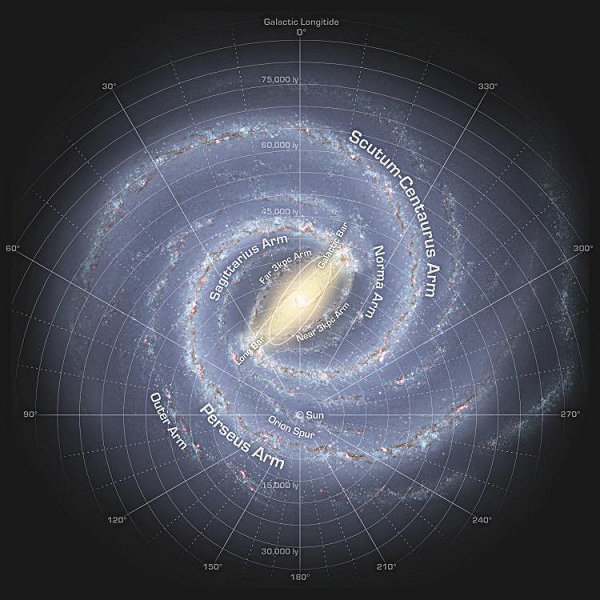

ur (
 ur/
ur/ r) + u
r) + u (
( ur/
ur/
 ) = Fr ---------- (15a)
) = Fr ---------- (15a)ur [
 (r u
(r u )/
)/ r] + u
r] + u [
[ (r u
(r u )/
)/
 ] = 0 ---------- (15b)
] = 0 ---------- (15b)where u
 =
= 
 /
/ t. If we assumed further that the force acts on the fluid only in the radial direction, and the surface density is constant for the fluid, then
t. If we assumed further that the force acts on the fluid only in the radial direction, and the surface density is constant for the fluid, then Figure 14 Spiral Galaxy 
Figure 15 Hurricane
[view large image]
(1/r) [
 (r ur)/
(r ur)/ r] +
(1/r) [
r] +
(1/r) [ (r u
(r u )/
)/
 ] = 0 ---------- (16)
] = 0 ---------- (16)
 -
- 0, the spiral assumes a broad sweeping pattern much like the hurricane in Figure 15 instead of one slim locus.
0, the spiral assumes a broad sweeping pattern much like the hurricane in Figure 15 instead of one slim locus.


 r dr, where
r dr, where 
 ) dp/dr ---------- (20).
) dp/dr ---------- (20).  re,
re, 